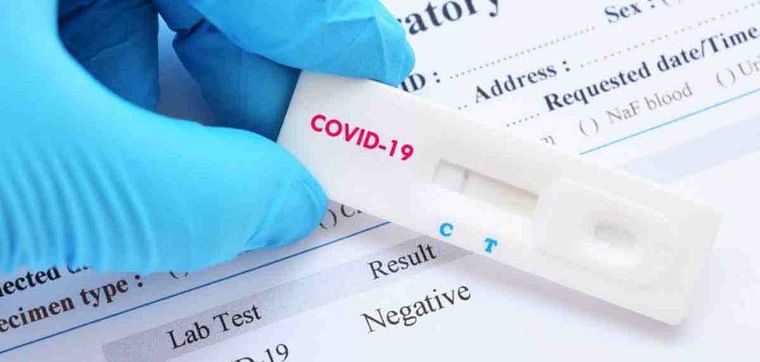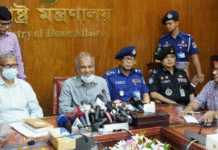
Inaccurate data released by the Directorate General of Health Services (DGHS) concerning the number of coronavirus patients, tests, and COVID-19 hospitals, had created confusion among the people. Many initiatives to contain the deadly virus are being delayed due to such data constraints.
Accurate information is needed to assess the pandemic situation as well as for projections, policy making, planning and implementation. Abu Jamil Faisal, a member of the health directorate’s eight-member Public Health Advisory Committee, told Prothom Alo, “Before purchasing personal protective equipment (PPE) the authorities must know the accurate number of how many physicians, nurses and other health workers need PPE. This requires one type of information. Again, information is needed to make projections concerning the pandemic. Such information is not available.”
A public health expert, speaking on condition of anonymity, said pathological information was an important tool to combat coronavirus which we lack in Bangladesh.
Abul Kalam Azad, director general of the health directorate, admitted the weakness in data.
“None of us were ready for coronavirus,” he told Prothom Alo. “There were many shortcomings in the beginning. Several fresh initiatives have been taken to deal with the virus. One of them is to solve the problem of accurate information,” he added.
Public health expert Abu Jamil Faisal said, “The district-wise number of patients does not match the total number of patients in the country. There is a huge difference.”
Added separately, the total number of patients in 64 districts falls short of the nearly 30,000 patients in the country, as recorded by the health directorate, he elaborated.
The Public Health Advisory Committee noted the problem about a month and a half ago and informed the health authorities. But the problem was not solved. Now it is almost impossible to give any district-based advice on the basis of this information.
The World Health Organization says it needs to collect data on how many people are dying from COVID-19 symptoms in order to analyze the pandemic situation. But no government department recorded such deaths.
There are three main sources of government information on coronavirus in Bangladesh. The Institute of Epidemiology, Disease Control and Research (IEDCR) has been providing information on coronavirus since the beginning. An integrated control room in the health directorate was established to provide information to the media. The control room provides data for regular news bulletins now. In addition, the government has launched a website, corona.gov.bd. Coronavirus related information is also being published there. There is inconsistency in the data obtained from these three sources.
IEDCR has been updating information on all the districts of eight divisions including Dhaka division and Dhaka city on their website. On 13 June, they said, the total number of patients in Dhaka city is 23,399. On the other hand, the total number of patients in 222 areas was 13,156. Prothom Alo published a report about this. Meerjady Sabrina, director of IEDCR, told Prothom Alo that it could have been due to incomplete addresses recorded while collecting the information.
This limitation of information has had an impact on coronavirus prevention activities. The government has identified red, yellow and green zones in Dhaka city based on the ratio of patients to population. It is heard that small areas will be locked down. People involved in this lockdown plan are not getting accurate information which is why the steps are being delayed.
So far 112,306 COVID-19 patients have been identified in the country. Of these, 1,464 died. Public health experts say this information is not enough. First, there is no district-wise death data. Second, there is no information on which hospitals have been recording more deaths. To know the situation, we need the information on how many people were in the ICU before death and whether they were suffering from any other diseases besides coronavirus. There is no such information in any department.
There is a long-standing trend in the health department to hide information or misinterpret information. It is continuing even now.
The World Health Organization says it needs to collect data on how many people are dying from COVID-19 symptoms in order to analyze the pandemic situation. But no government department recorded such deaths.
Patients who are returning home from hospital or who are recovering from treatment at home have to undergo a diagnostic test. The same test has to be done twice in 24 hours. If the first test is negative, the second test is not required within 24 hours. The test is done later on the advice of the doctor.
The health directorate said 45,077 people had recovered as of Sunday. The health authorities have no information on how many of them have been tested twice. There is no information on how many of those who have been tested have tested positive. Health department sources said the number of positive patients was being released by matching with the number of new patients identified daily.
According to the integrated control room of the health department, 7,250 beds have been prepared for corona patients in different hospitals in the capital. Prothom Alo found this to be inaccurate. For example, in the DNCC market near the Mohakhali bus stand of the North City Corporation, there is a 1500-bed isolation centre and a 250-bed hospital for physicians and nurses. In reality, this isolation centre and hospital is not prepared yet
A private hospital has been shown to have 200 beds ready, but in reality the hospital is not providing any treatment.
No explanation
Most of the confirmed patients are undergoing treatment at home. Many of them are recovering. The directorate of health does not regularly update how many people are recovering from treatment at home. Suddenly, the DGHS in its news bulletin on 15 June said that 34,027 patients had recovered which were 18,730 in the previous day. However, it did not say how many of them recovered at home or how the government got the information of the patients who recovered at home.
Iftekharuzzaman, executive director of Transparency International Bangladesh (TIB), told Prothom Alo: “There is a long-standing trend in the health department to hide information or misinterpret information. It is continuing even now.”
“This is due to lack of accountability,” he added saying, “Without proper information, confusion and doubts arise in the minds of the people. The people are losing confidence in the government and in the health department.”
*This report, originally published in Prothom Alo print edition, has been rewritten in English by Farjana Liakat









